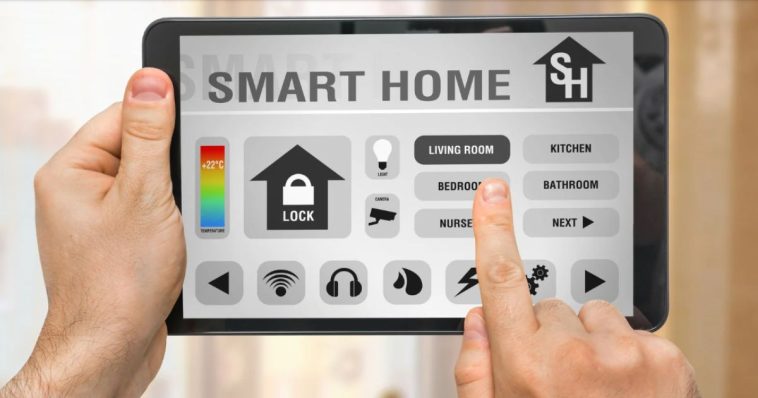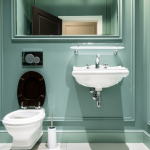Smart homes are gaining popularity due to their enhanced convenience and security. These advanced technologies offer greater comfort and integration into daily life by enabling remote control of appliances, devices, and systems. Temperature, lighting, and security can be easily managed via smartphones, improving energy efficiency and reducing costs.
However, smart home technology has challenges, including privacy concerns, security risks, and high initial costs. Compatibility issues between devices from different manufacturers can also arise, and ongoing maintenance or subscription fees add to long-term expenses. While the benefits are significant, homeowners must weigh these limitations carefully before fully embracing smart home systems.
Advantages of Smart Homes
Convenience and Control
One of the primary benefits of smart homes is their convenience and control. Through smart devices and applications, homeowners can remotely manage various aspects of their homes, such as lighting, temperature, and security. This capability allows for a more comfortable living environment, reduces manual intervention, and saves time. For instance, temperature settings can be adjusted before arriving home, and lighting can be programmed to turn on or off automatically at specific times.
Energy Efficiency and Savings
Smart home technology plays a significant role in improving energy efficiency and reducing costs. Devices like smart thermostats, lights, and air conditioning systems can be programmed to optimize energy consumption. Learning thermostats, for example, adapt to household routines and adjust heating or cooling accordingly, while smart plugs and switches help control individual appliances, minimizing energy waste. These features contribute to reduced energy bills and a lower environmental impact.
Security and Safety
Smart security systems, including cameras, smart locks, and alarm systems, enhance home safety by providing remote monitoring and real-time alerts. Homeowners can monitor their property from any location, control access remotely, and receive notifications in the event of unusual activity. Additionally, smart systems can detect potential hazards, such as gas leaks or fires, and send immediate alerts or even notify emergency services. This added layer of security provides peace of mind, especially when away from home.
Customization and Flexibility
Smart home technology is highly customizable and adaptable. Devices like voice assistants (e.g., Google Home, Amazon Echo) can integrate with other smart appliances, allowing for voice control and the easy creation of routines. As technology evolves, new devices and features can be added, ensuring that the smart home system can grow alongside changing needs and preferences. This level of flexibility allows homeowners to improve their home automation setup continuously.
Disadvantages of Smart Homes
The costs associated with smart homes can be a significant barrier for many. The initial expense of purchasing and installing smart home devices is often high, particularly if outfitting an entire house with the latest technology. Devices such as smart thermostats, lights, security cameras, and locks can add up quickly, and professional installation may be required for some systems, increasing the overall cost.
Additionally, ongoing expenses, such as maintenance fees for devices and services, can accumulate over time. Subscription fees for cloud storage, data backup, or advanced monitoring services are standard for smart home systems, which can lead to substantial recurring costs. These initial and long-term expenses may be prohibitive for many homeowners, especially considering additional costs like system upgrades or troubleshooting. Therefore, evaluating the financial commitment before fully committing to a smart home setup is essential.
Privacy and Security Concerns
Smart homes depend on the Internet and wireless communication protocols, which raises concerns about privacy and security. With multiple devices connected to the Internet, sensitive data—ranging from video footage to financial information—could be vulnerable to hacking. Unauthorized access to smart devices, such as smart locks or security cameras, could lead to significant risks, including theft or personal security breaches. To mitigate these risks, users must ensure proper security measures, such as strong passwords and encrypted connections.
Compatibility and Reliability Issues
Compatibility between devices from different manufacturers can pose challenges in building a fully integrated smart home system. With many companies producing smart devices, ensuring that everything works together seamlessly may require additional equipment or replacements. Furthermore, the reliability of smart home systems can be impacted by factors such as weak Wi-Fi connections, software bugs, or unplanned updates. These disruptions can hinder functionality and affect user experience.
Evolving Smart Home Technologies
The smart home industry continues to evolve by integrating voice-controlled assistants like Alexa and Google Home. These systems enable users to control multiple devices through voice commands, making the home environment more accessible and efficient. Managing lighting, temperature, and security via voice activation adds convenience, particularly for people with mobility issues or visual impairments.
However, there are some notable concerns associated with this technology. Privacy issues arise due to the collection and use of personal data by voice-activated devices. Users should be cautious about data storage and sharing practices to protect their privacy. Additionally, many smart devices rely on a stable internet connection, which can be problematic if the network is disrupted, leading to a loss of functionality.
Despite these concerns, smart home technology advancements continue to increase efficiency and convenience. As competition grows among manufacturers, innovations in security, energy savings, and user accessibility are expected to enhance smart home systems further.
Government and Regulations
With the rapid growth of smart home technologies, government oversight is becoming increasingly important to ensure security and privacy for users. Smart home systems can provide valuable tools for crime prevention, emergency response, and enhanced quality of life, particularly for vulnerable populations like the elderly or disabled. For example, automated security systems can aid law enforcement, and sensors that detect fire or gas leaks can help emergency services respond more quickly.
However, government involvement also brings challenges, primarily related to privacy concerns. Data breaches or unauthorized access to personal information could compromise user security. As smart home devices become more integrated into daily life, governments must establish cybersecurity regulations to protect users’ data. Moreover, incentives for adopting green technologies, such as tax credits or subsidies, can promote energy savings but may also create market dependencies.
In addition, standardized regulations are needed to ensure device compatibility and interoperability between products from different manufacturers. This would minimize disruptions and ensure that consumers have access to reliable and secure systems.
The Essential Smart Home Devices of 2025
Smart Thermostats: Comfort and Efficiency
Smart thermostats, such as the Nest Learning Thermostat and Ecobee smart thermostat, are integral for any modern home. These devices learn heating and cooling preferences, adjusting temperatures automatically and saving energy. The Nest adjusts based on user routines, while the Ecobee includes room sensors to eliminate hot and cold spots. Both contribute to comfort and energy savings by offering remote control and automation.
Smart Security: Peace of Mind
Security devices, including the Ring Video Doorbell 4 and Arlo Ultra 2, offer advanced features such as motion detection, night vision, and two-way audio. The Ring Doorbell provides HD video with color night vision, while the Arlo Ultra 2 delivers 4K HDR video and a 180-degree field of view. These systems offer easy installation and flexibility, enhancing home security.
Smart Plugs: The Versatile Workhorses
Smart plugs, like the TP-Link Kasa and Amazon Smart Plug, convert any appliance into a smart device. These plugs provide added convenience and energy savings by controlling lamps, fans, or other appliances via smartphone or voice command.
Smart Displays: The Visual Control Centers
Smart displays, such as the Google Nest Hub and Amazon Echo Show, combine the functionality of smart speakers with visual interfaces. These devices allow users to control home devices, check the weather, and even make video calls, adding convenience and efficiency to the home environment.
Smart Locks: The Key to Security
Smart locks like the August Wi-Fi Smart Lock and Schlage Encode offer keyless entry and remote locking capabilities. They integrate seamlessly with other smart home systems, providing added security and convenience, including virtual keys for guests.
Smart Vacuums: The Cleaning Companions
Robotic vacuums like the iRobot Roomba s9+ and Eufy RoboVac X8 offer automated cleaning with advanced mapping and navigation capabilities. These devices can clean efficiently, with some even emptying their dustbins, allowing homeowners to enjoy clean floors without lifting a finger.
Smart Air Purifiers: Breathe Easy
Air purifiers like the Dyson Pure Cool and Coway Airmega 400 improve indoor air quality by capturing harmful particles. These devices offer real-time air quality monitoring and app control, ensuring clean, healthy air at home.
Smart Blinds: The Window to Convenience
Smart blinds, such as the Lutron Serena and Soma Smart Shades 2, provide easy control over lighting and privacy. These devices can be operated via smartphone or voice command and scheduled for automatic opening and closing, adding convenience to everyday life. Each device enhances comfort, security, and efficiency, making it an essential component of the modern smart home.
Navigating the Future of Smart Home Living
Smart home technology offers many advantages, including enhanced convenience, energy efficiency, and security. With smart thermostats, security systems, and automated lighting, homeowners can create a more comfortable and efficient living environment. However, these benefits have challenges, such as high upfront costs, privacy and security risks, and device compatibility issues.
It’s essential for homeowners to carefully consider both the advantages and disadvantages before fully embracing smart home systems. As technology continues to evolve, the future of smart homes holds even greater potential, but careful planning and consideration are key to maximizing their benefits while minimizing potential drawbacks.




